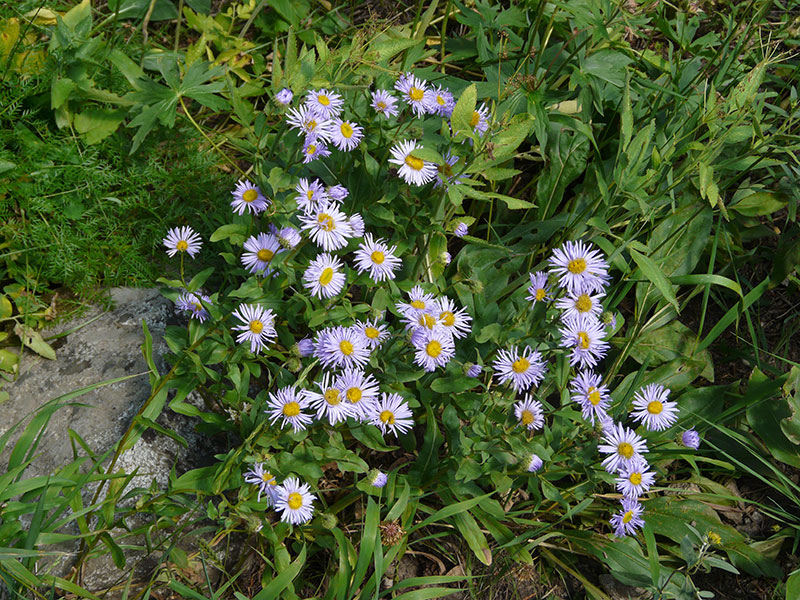Erigeron speciosus / aspen fleabane
- prolific purple-ish flowers with many “petals” and a yellow center
- forest openings and edges, meadows
- late blooming – a “fall aster”
Also known as: garden fleabane, showy fleabane, showy daisy
Aspen fleabane is a long-lived perennial with underground rhizomes and a thick, branching, woody caudex. Each caudex sends up ca. 15 stems. Because of clonal growth from the rhizomes, aspen fleabane tends to form colonies, albeit small ones.
This growth habit is responsible for the wonderful show that this species puts on in late summer and fall. The exact timing of flowering and the massiveness of the display depends partly on when snow melt was and whether or not there were late freezes after flower buds were set. The floral display ranges from 2 to 20 flower heads per stem, each having 75-150 blue-ish or lavender or purple-ish ray florets surrounding a yellow-orange disk. It is impossible to overlook, and really supports the alternate name, “showy daisy”.
The plants themselves are clusters of leafy stems up to 40″ tall. The lower leaves – which have petioles – tend to fall off as the season progresses. These stems branch again near the top into leafless stems. It is at the end of these that the flower heads develop. The stems – often tinged maroon – and leaves are not hairy but if you do find what looks like a hairy specimen, consider identifying it as threenerve fleabane, E. subtrinervis. However, it really isn’t clear that this is a different species.
Aspen fleabane grows in moist places in woods, on rocky slopes and in meadows. It is found in both full sun and partial shade in forest openings, understoreys or along edges. Plants in sun tend to be a bit smaller than those in shade, but also more prolific. The species is abundant in sagebrush communities and with hillside (but not flatland) aspen, perhaps because the hillside canopies are more open and not as moist.
Aspen fleabane plants tolerate cold temperatures during the growing season, although flowering plants don’t really like them. Nevertheless, unless they are subjected to a really hard freeze, you can still expect a good show. When almost everything else is done for the year, this is a happy find.
The Bureau of Land Management has an extensive analysis of the biology of aspen fleabane here.
| Color | |
|---|---|
| Family | |
| Blossom size | |
| Inflorescence size | |
| Inflorescence type | |
| When? | |
| Where? |




